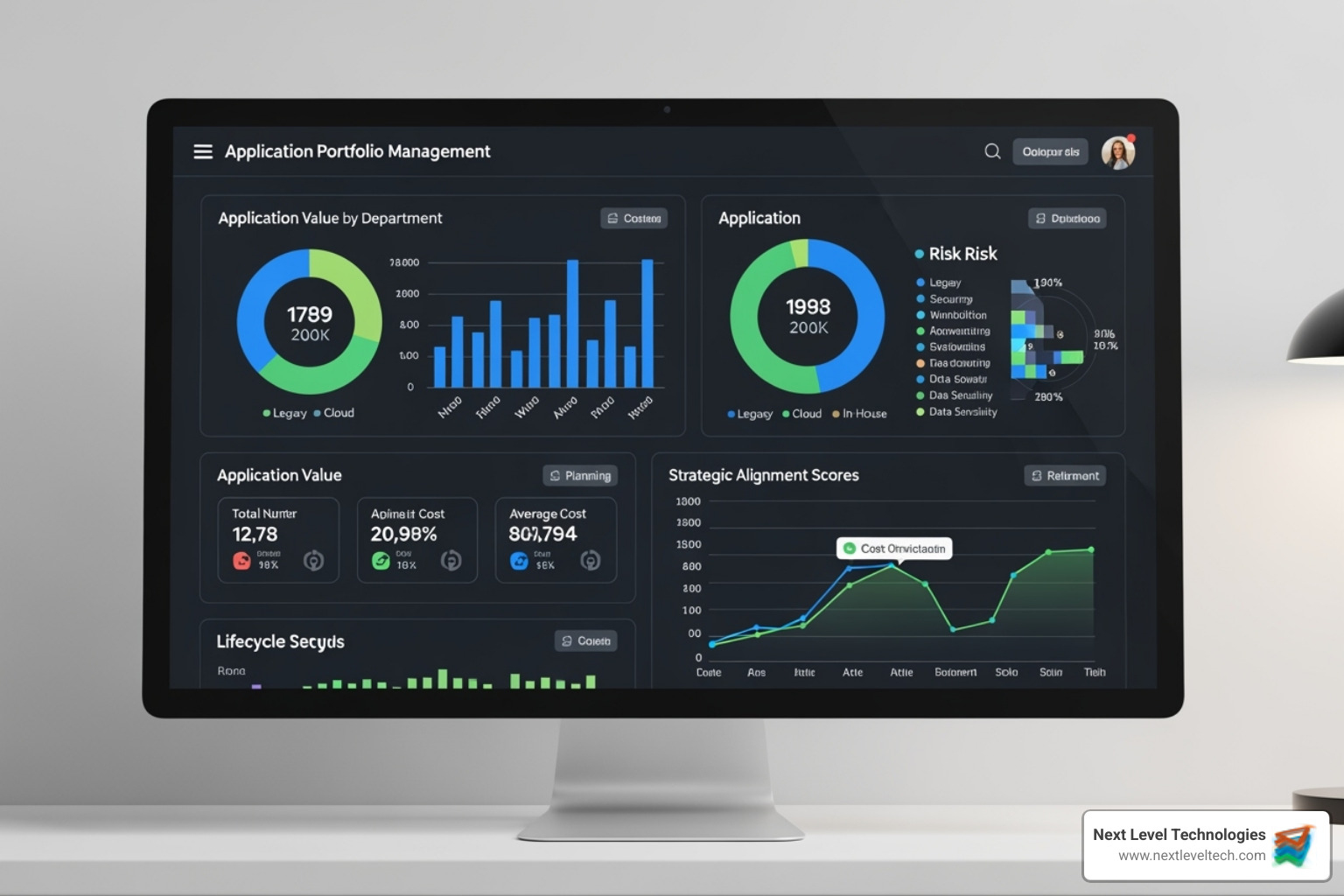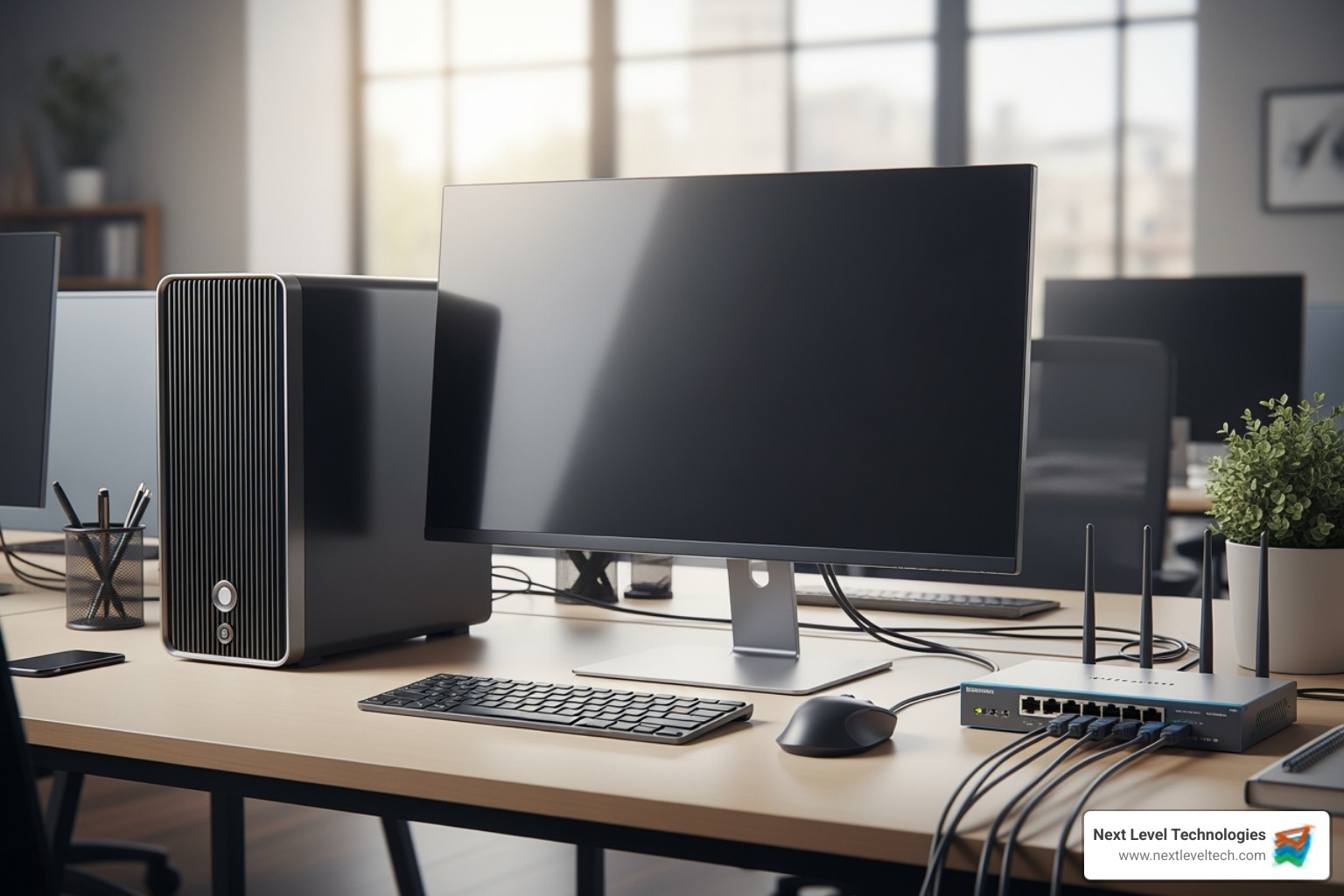AWS SOC 2 Compliance Made Easy (Yes, Really!)
July 15, 2025

Master it application portfolio management. Optimize IT costs, reduce complexity, and align strategy for business growth.
December 4, 2025

Safeguard your business. Master secure data access with expert strategies, modern tech, and training to protect critical data.
December 3, 2025

Learn basic computer hardware and networking essentials. Discover components, connections, and how your digital world operates. Start here!
December 2, 2025
July 15, 2025
Quick Answer:
If your organization operates from Columbus or Worthington, Ohio, or our Charleston, West Virginia office, SOC 2 compliance is quickly becoming table stakes for winning enterprise business. Breaches now average $4.2 million in losses, so prospects want proof you guard their data.
The upside? AWS already maintains SOC 2 for its infrastructure—more than 180 services as of Fall 2024—so you inherit many controls automatically.
The challenge is configuring your own AWS environment correctly. That’s where the extensively trained cybersecurity team at Next Level Technologies comes in—we’ve helped dozens of regional businesses complete their AWS SOC 2 journey without detours.

SOC 2, defined by the American Institute of Certified Public Accountants (AICPA), is a comprehensive auditing framework designed specifically for service organizations that store customer data in the cloud. Think of it as a rigorous security report card that proves your business takes data protection seriously.
The framework evaluates your organization's controls across five critical areas called Trust Service Principles. Unlike other compliance frameworks that focus on specific industries, SOC 2 is particularly relevant for technology companies, SaaS providers, and any business that handles customer data through cloud services.
Understanding these five principles is crucial for your AWS SOC 2 compliance journey:
Security - This is the foundation that protects your system resources against unauthorized access. It covers everything from access controls to network security and system monitoring.
Availability - Ensures your systems are operational and usable as committed or agreed. This includes uptime requirements, disaster recovery capabilities, and system performance monitoring.
Processing Integrity - Guarantees that system processing is complete, valid, accurate, timely, and authorized. This principle ensures data isn't corrupted, lost, or improperly modified during processing.
Confidentiality - Protects information designated as confidential, going beyond basic security to ensure sensitive data remains private throughout its lifecycle.
Privacy - Addresses how personal information is collected, used, retained, disclosed, and disposed of according to your privacy notices and applicable privacy laws.
Not every organization needs to address all five principles. You'll choose which ones apply to your business based on your services and customer commitments. Security is typically required for all SOC 2 audits, while the others depend on your specific use case.
For businesses operating on AWS, SOC 2 compliance has become essential for several reasons:
Customer Trust and Vendor Due Diligence - Enterprise customers increasingly require SOC 2 reports before signing contracts. It's become a standard part of vendor risk assessments, especially for SaaS companies and service providers handling sensitive data.
Competitive Advantage - Having a SOC 2 report differentiates your business from competitors who haven't achieved compliance. It demonstrates your commitment to security and can be a deciding factor in sales processes.
Risk Management - With data breaches becoming more costly and frequent, SOC 2 compliance helps you identify and address security gaps before they become problems. The framework forces you to implement comprehensive security controls and monitoring.
Regulatory Requirements - Many industries have specific regulatory requirements that SOC 2 compliance helps address. While SOC 2 isn't a regulation itself, it provides a framework that supports compliance with various industry standards.

Here's the thing about AWS SOC 2 compliance - it's not just about AWS being compliant. It's about understanding exactly who does what in the security equation. Think of it like renting an apartment: your landlord handles the building's foundation and plumbing, but you're responsible for locking your door and securing your belongings.
AWS calls this the Shared Responsibility Model, and it's the foundation of everything we do when helping businesses achieve compliance. The model breaks down into two clear areas: compliance "of" the cloud (AWS's job) and compliance "in" the cloud (your job).
Getting this distinction wrong is honestly one of the biggest mistakes we see when working with clients in Columbus and Charleston. Some businesses assume AWS handles everything, while others try to secure things that AWS already manages. Both approaches can derail your compliance efforts.
AWS takes care of the heavy lifting when it comes to foundational security. Their AWS global infrastructure provides a security foundation that most organizations could never build themselves.
Physical security is completely handled by AWS. They manage data center access controls, environmental protections, and secure hardware disposal. We're talking about multiple layers of physical security that would cost millions for any single organization to implement.
Hardware and software security at the infrastructure level is also AWS's responsibility. They handle patching and updates for the underlying hardware, hypervisor, and core services. This means the foundation your applications run on stays secure without you having to worry about it.
Networking infrastructure protection includes DDoS protection, network segmentation, and core networking services. AWS maintains these security controls across their entire global network.
The best part? AWS provides detailed AWS SOC 2 reports that document their compliance with SOC 2 requirements. These reports are available through AWS Artifact and cover the infrastructure and services you're building on top of.
Our cybersecurity team regularly reviews these AWS compliance reports to ensure our clients benefit from the latest security improvements. Having extensively trained staff means we can translate AWS's technical security controls into language that makes sense for your business.
While AWS handles the foundation, you're responsible for securing everything you build on top of it. This is where most of the work happens for your AWS SOC 2 compliance journey.
Customer data protection is entirely your responsibility. You need to properly classify, encrypt, and protect all customer data stored in AWS. This includes implementing appropriate access controls and monitoring who accesses what data.
Identity & Access Management (IAM) configuration is critical and often the most challenging area. You must properly set up user permissions, roles, and policies. Get this wrong, and you've got a major compliance gap.
Application security covers your applications, code, and configurations. This includes implementing proper authentication, authorization, and input validation. Your applications need to be secure by design.
Operating system configuration becomes your responsibility when using services like EC2. You handle patches, configurations, and monitoring for the operating systems you deploy.
Network and firewall rules must be properly configured through security groups, network ACLs, and any additional firewall rules. You're essentially building the security perimeter around your applications.
Client-side and server-side encryption implementation is up to you. While AWS provides the encryption tools, you're responsible for using them correctly and managing encryption keys properly.
For detailed guidance on handling these responsibilities effectively, our Cloud Security Best Practices guide walks through each area step by step.
The key is understanding that this shared model actually works in your favor. AWS handles the complex infrastructure security that would be incredibly expensive and difficult to manage yourself, while you focus on securing your specific applications and data.

Most organizations need 6-12 months to earn an auditor-signed SOC 2 report. Our Columbus- and Charleston-based security engineers divide the project into three clear phases.
We use our IT Security Policy Compliance templates so you are not writing everything from scratch.

Below are the high-impact steps our extensively-trained team implements most often. Follow them and you will answer 80 % of auditor questions before they are even asked.
Our cybersecurity specialists configure these services for clients in Worthington, Columbus, and Charleston every week, ensuring controls remain active long after the initial audit.
No. AWS’s own audit covers the infrastructure, not your applications or data. You still need an independent SOC 2 examination of your environment and policies.
As of Fall 2024, 183 services—including EC2, S3, RDS, Lambda, VPC, IAM, CloudWatch, and CloudTrail—are in scope. You can download the latest report in AWS Artifact.
A new audit is required every 12 months. Most customers insist on a Type 2 report that demonstrates controls over a 6-12-month observation window, so continuous monitoring is essential.
Achieving AWS SOC 2 compliance is more than just a technical milestone - it's a powerful way to demonstrate your commitment to protecting customer data and building lasting business relationships. When you complete this journey, you're not just getting a report; you're joining the ranks of trusted service providers that enterprise customers seek out.
Building a Security Culture - The most successful compliance programs we've seen go far beyond checking boxes. They create environments where every team member understands their role in protecting customer data. This cultural shift makes compliance sustainable and actually strengthens your organization from the inside out.
When your employees understand why security matters and how their daily actions contribute to compliance, maintaining AWS SOC 2 compliance becomes much easier. It's the difference between having security policies that collect dust and having living, breathing practices that protect your business every day.
Demonstrating Commitment - Your SOC 2 report becomes a powerful business tool that opens doors with enterprise customers. We've watched our clients win major contracts specifically because they could provide current SOC 2 documentation during vendor due diligence processes.
This isn't just about compliance - it's about competitive advantage. When prospects see that you've invested in SOC 2 compliance, they understand that you take their data as seriously as they do. In today's environment where data breaches make headlines regularly, this trust factor can be the deciding element in major business decisions.
The Ongoing Journey - Here's what many organizations don't realize: compliance isn't a destination, it's an ongoing commitment. The businesses that thrive with SOC 2 compliance are those that view it as continuous improvement rather than a one-time project.
This means regularly reviewing and updating your controls, staying current with AWS security features, and maintaining the documentation and evidence that auditors need. It also means investing in ongoing training for your team and staying ahead of emerging threats.
The highly-trained cybersecurity team at Next Level Technologies, serving businesses in Columbus, Ohio, and Charleston, WV, can guide you through every phase of achieving and maintaining SOC 2 compliance on AWS. Our extensive experience with AWS environments and deep cybersecurity training means we understand both the technical complexities and business realities of compliance.
We've helped dozens of organizations steer this process, from initial gap analysis through ongoing compliance monitoring. Our team knows the common pitfalls - like misconfigured IAM policies or incomplete documentation - and can help you avoid costly mistakes while streamlining your path to compliance.
Whether you're just starting your compliance journey or need help maintaining existing controls, we're here to support you. Our managed IT services approach means we can handle the technical implementation while you focus on running your business.
Contact us for managed IT services and support to discuss how we can support your AWS SOC 2 compliance needs. We'll work with you to create a compliance strategy that fits your timeline, budget, and business goals.
Remember: SOC 2 compliance isn't just about passing an audit - it's about building a secure, trustworthy business that customers can rely on. With the right approach and expert guidance, achieving compliance becomes a strategic advantage rather than just another requirement to meet.
Master it application portfolio management. Optimize IT costs, reduce complexity, and align strategy for business growth.
December 4, 2025
Safeguard your business. Master secure data access with expert strategies, modern tech, and training to protect critical data.
December 3, 2025
Next Level Technologies was founded to provide a better alternative to traditional computer repair and ‘break/fix’ services. Headquartered in Columbus, Ohio since 2009, the company has been helping it’s clients transform their organizations through smart, efficient, and surprisingly cost-effective IT solutions.
